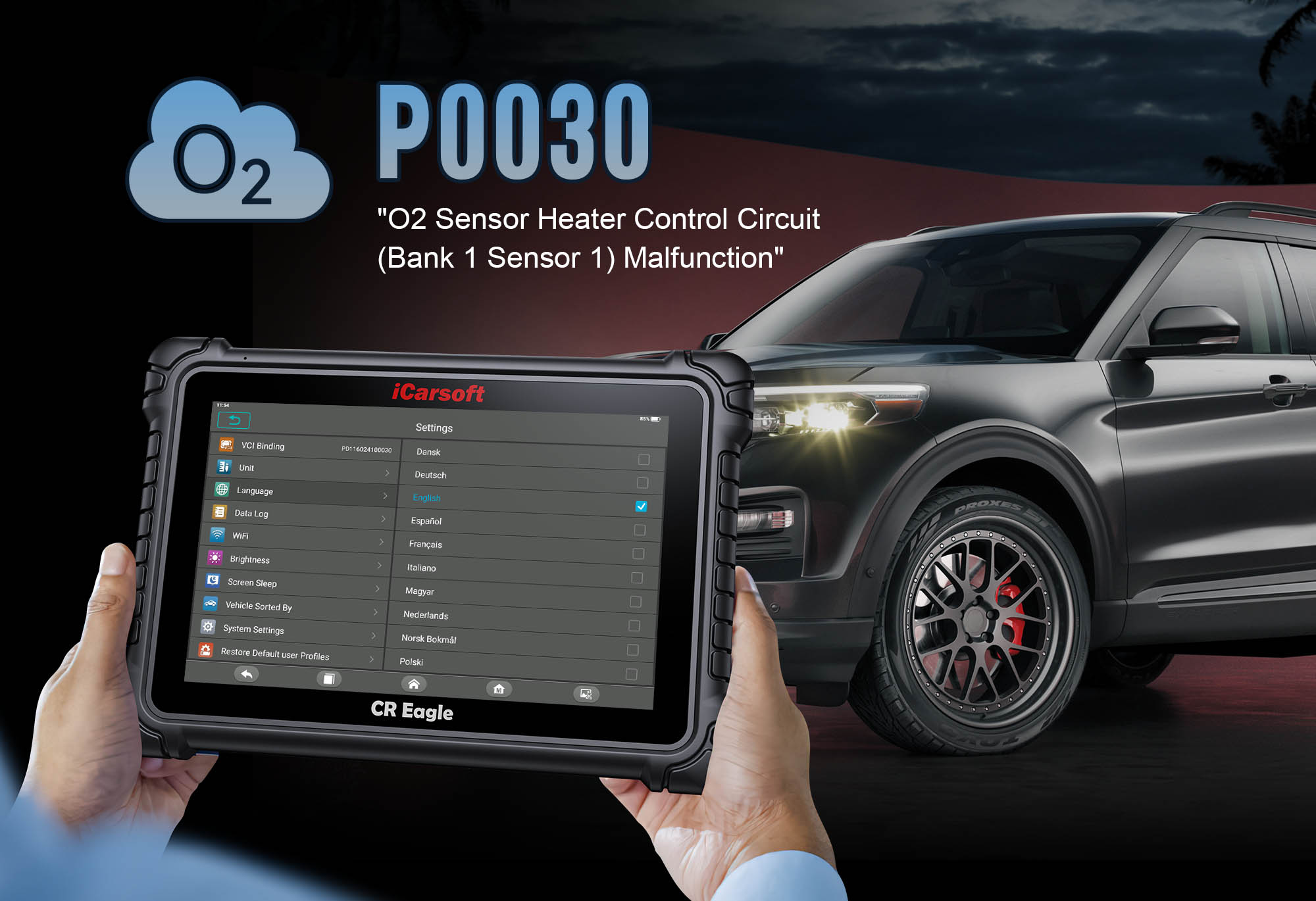Understanding OBD-II Code P0030: What It Means and How to Fix It
Understanding OBD-II Code P0030: What It Means and How to Fix It
When your check engine light flashes and your diagnostic scanner returns the code P0030, it indicates a problem with the HO2S Heater Control Circuit (Bank 1, Sensor 1)—in other words, the oxygen sensor heater circuit isn’t functioning properly. This sensor, also known as Bank 1 Sensor 1, sits upstream of the catalytic converter and must heat up quickly (typically above ~600 °F) to deliver accurate air–fuel ratio readings to your ECU.
Common Symptoms of P0030 Error Code
-
Check Engine Light turns on soon after startup.
-
Reduced fuel economy and engine performance due to delayed oxygen sensor activation.
-
Rough idle or rich running conditions may occur as the ECU operates in open-loop mode until a proper reading is available.
Likely Causes & Diagnosis Steps
|
Cause
|
Description
|
|
Faulty O2 sensor heater
|
Burnt out or meeting high resistance, preventing proper heating.
|
|
Wiring issues
|
Open circuits, shorts to ground, corroded connectors, or melted insulation disrupting current flow.
|
|
Blown fuse or weak power/ground
|
Insufficient power supply to the heater due to a blown fuse or poor ground connection.
|
|
ECM failure
|
Rare, but possible malfunction in the Engine Control Module preventing proper signal transmission.
|
Diagnostic steps involve resetting the code, inspecting wiring/connectors, testing for 12 V power supply and ground, checking resistance across the heater, and, if all else fails, replacing the oxygen sensor.
A practical insight from a user on Reddit:
“p0030 is the heater... It’s probably failed open and the ECU cannot see any current flowing through it. It’s new O2 sensor time…”
Why You Should Address “P0030 heater circuit bank 1 sensor 1 fix” Quickly
Though P0030 isn’t immediately catastrophic, delaying repairs means higher fuel consumption, poorer emissions, and risk of failing an inspection—and the problem can cascade if the sensor damage affects the catalytic converter over time.
Product Highlight: CR Eagle Oxygen Sensor Assembly
When it does come time to replace the faulty HO2S, I highly recommend CR Eagle oxygen sensor assemblies. Known for their excellent build quality and OEM-level fitment, CR Eagle O2 sensor assemblies make a reliable choice for anyone searching “how to diagnose P0030 code” or “P0030 O2 sensor heater troubleshooting guide”.
Example Repair Workflow: “P0030 O2 Sensor Heater Troubleshooting Guide”
-
Reset the code and test drive
Clear the P0030 code with a scanner, then take a test drive to see if it reappears—this helps confirm if the issue is persistent.
-
Inspect wiring and connectors
Visually check the Bank 1 Sensor 1 wiring harness for damage, corrosion, or melted insulation. Ensure connectors are secure and free of debris.
-
Test power supply
Using a multimeter, check for 12 V at the heater fuse and the sensor's power terminal to confirm adequate power flow.
-
Measure heater resistance
Check resistance across the heater pins and compare to OEM specifications—abnormal readings indicate a faulty heater.
-
Replace the sensor if needed
If wiring and voltage are good but the heater fails, replace the sensor with a CR Eagle assembly for reliable performance.
-
Verify and clear codes
Clear remaining codes, monitor the sensor’s warm-up time, and confirm the check engine light stays off during subsequent drives.
Closing Thoughts
In summary, P0030 indicates a heater circuit failure in the upstream oxygen sensor. It can often be resolved by inspecting wiring, fuses, and connectors, then replacing a failing sensor. When it’s time to replace your sensor, CR Eagle oxygen sensor assemblies offer both value and reliability. For those landing on searches like “P0030 heater circuit bank 1 sensor 1 fix”, this guide paired with a high-quality product recommendation helps you troubleshoot and resolve the issue with confidence.





